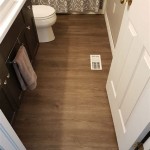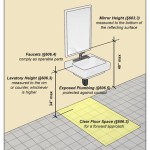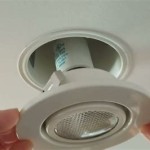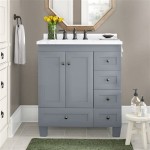How to Clear Slow Bathroom Sink Drains Quickly
A slow-draining bathroom sink can be a frustrating inconvenience. It can lead to water pooling on the counter, creating a breeding ground for bacteria and unpleasant odors. Fortunately, most slow bathroom sink drains can be cleared quickly and easily with readily available tools and techniques. This article will guide you through the steps to effectively address this common plumbing issue.
1. Investigate the Drain for Obvious Blockages
Before resorting to more drastic measures, it's important to visually inspect the drain for any visible blockages. This could be a clump of hair, a forgotten piece of jewelry, or a buildup of soap scum. To do this, use a flashlight to illuminate the drain opening. If you spot a blockage, try to carefully remove it with a pair of tweezers or a small hook.
If the blockage is too deep to reach manually, try using a plunger. Place the plunger firmly over the drain opening, ensuring a tight seal. Pump the plunger up and down vigorously for several minutes. This creates pressure that can dislodge the blockage and clear the drain.
2. Employ Drain Cleaning Tools
If the initial inspection and plunging don't resolve the issue, it's time to utilize specialized drain cleaning tools. These tools are designed to break up clogs and remove debris from the drainpipe. Here are some popular options:
a. Drain Snake: A drain snake is a flexible cable with a hook or corkscrew-like tip. It is inserted into the drainpipe and then rotated manually to break up the clog and pull it out. Manual drain snakes are readily available at most hardware stores. For stubborn clogs or deeper blockages, an electric drain snake might be necessary.
b. Drain Cleaning Chemicals: Chemical drain cleaners are a quick fix for clogged drains, but they should be used with caution. These potent solutions contain strong acids or bases that can dissolve hair, grease, and soap scum. When using chemical drain cleaners, adhere strictly to the manufacturer's instructions. Wear protective gloves and ensure proper ventilation. Note that chemical drain cleaners can be harmful to pipes in the long run.
3. Prevent Clogs Proactively
Once the drain is cleared, it is crucial to implement preventive measures to avoid future clogs. These steps can significantly reduce the frequency of drain cleaning:
a. Hair Strainer: Install a hair strainer or drain catcher over the drain opening. This simple device effectively traps hair and other debris before they can enter the drainpipe, minimizing the risk of clogs.
b. Regular Cleaning: Regularly dispose of hair and debris collected by the strainer. This helps maintain a clear drain and prevents buildup.
c. Avoid Pouring Grease: While it may seem tempting, avoid pouring grease or oil down the drain. Grease solidifies in pipes, contributing to clogs. Instead, pour it into a container and dispose of it properly.
In conclusion, a slow bathroom sink drain can be resolved with patience and the right approach. By following these steps, you can effectively clear the blockage and maintain a smoothly functioning drain. Remember to prioritize preventative measures to avoid future clogs and keep your bathroom sink running smoothly.

How To Unclog A Slow Running Bathroom Sink Drain 10 Options

How Can I Clear A Slow Drain Faq Plumbing By Jake

How To Unclog A Drain Without Calling Plumber

How To Unclog A Slow Running Bathroom Sink Drain 10 Options

Slow Sink Drain 6 Diy Fixes For Before You Call A Plumber Bob Vila

How To Clear A Clogged Drain Reviews By Wirecutter

How To Unclog A Bathroom Sink Hana S Happy Home

7 Best Tips For How To Clear A Slow Drain Plus 1 Bonus Tip

5 Natural Ways To Unclog A Bathroom Sink Hiller How

Easiest Way To Clear A Slow Bathroom Sink Always Affordable Plumbing
Related Posts







